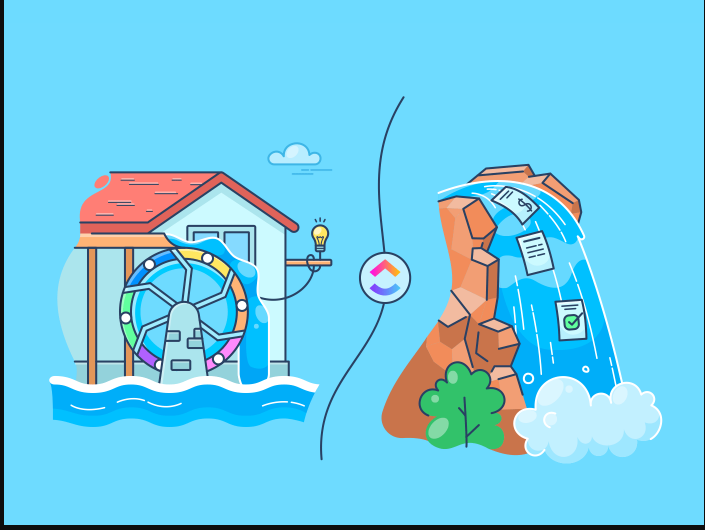From Waterfall to DevOps: The Evolution of IT Practices
 Saad dastgir
Saad dastgirPicture this: in one corner, we have Traditional IT, the seasoned veteran with a strict regimen and a penchant for meticulous planning, who’s been faithfully serving the tech world for decades. In the other corner, we have DevOps, the new kid on the block, sporting a hipster beard and a hoodie, ready to shake things up with continuous integration and deployment.
The world of software development is like a dramatic reality show, and these two contenders are vying for the title of "Ultimate IT Methodology". Traditional IT, with its Waterfall approach, moves with the grace of a classic waltz – slow, deliberate, and sometimes a little too predictable. Meanwhile, DevOps is the breakdancer, flipping the script with agile moves and an unrelenting pace.
But this isn't just a battle of old-school vs. new-school; it’s a journey to understand how these two methodologies can coexist, learn from each other, and ultimately drive innovation in our ever-changing tech landscape. Will the rigid structures of Traditional IT withstand the dynamic onslaught of DevOps? Or will the agile newcomer sweep the veteran off its feet?
Why DevOps is Even Needed?
Imagine trying to deploy a new software update using traditional IT methods. It’s like navigating a maze blindfolded – slow, frustrating, and prone to wrong turns. Operations teams often struggle because there's a glaring disconnect between them and the development team. No clear interface, no seamless communication – just a lot of back-and-forth that makes deploying new features or fixes a real headache.
Enter DevOps, the superhero duo of the IT world, blending development and operations into a smooth, coordinated dance. DevOps doesn’t just patch up the communication gap; it completely transforms the way we work. By embedding a culture of collaboration and leveraging cutting-edge tools, DevOps ensures everyone is on the same page, from planning to deployment.

In a DevOps setup, team members are versatile and knowledgeable about both development and operations. It's like having a Swiss Army knife in your pocket – a single team that handles everything with efficiency and finesse. Here’s a simple step-by-step guide to illustrate how DevOps makes deployment a breeze
Step-by-Step Deployment with DevOps
Plan Together: Both developers and operations personnel collaborate from the get-go. Define clear goals, share insights, and agree on timelines.
Code and Build: Developers write code, and continuous integration tools automatically test and build the application.
Test Continuously: Automated testing tools run throughout the development process, catching issues early.
Deploy Frequently: Continuous deployment pipelines ensure that every change is automatically deployed to the staging environment and, once validated, to production.
Monitor and Feedback: Monitoring tools provide real-time insights into application performance, and feedback loops ensure any issues are quickly addressed.
💡 IMPLEMENT ⇒TEST⇒ BUILD ⇒ PUSH ⇒ DEPLOY⇒ MAINTAIN
Agile Methodology
Traditional Waterfall model is followed in which predefined things are written and development team write the code, any mishaps happen it will go to top and we code again, this is a slow process and therefore Agile methodology is followed, each feature is made. tested and deployed independently and we will get feedback every time.
Why Automation?
Imagine having a personal assistant who never sleeps, never gets tired, and always follows your instructions to the letter. That's what automation is for your IT processes. It’s like having a robot butler that handles repetitive tasks, freeing you up to focus on the important stuff. Instead of manually deploying code, running tests, or configuring servers, automation tools take care of it all with a single click (or no clicks at all, if it's fully automated).
What is Scaling?
Now, picture you planned a Function and planned for 20 guests, but suddenly 100 people show up. Panic? Not if you know how to scale! Scaling in IT means your system can handle increased load without breaking a sweat. It’s like having a magical room that expands whenever more people arrive. Whether it’s more users on your app or higher data loads, scaling ensures your infrastructure grows (or shrinks) according to demand, maintaining performance and reliability.
What is Infrastructure?
Finally, let’s talk about infrastructure. If your IT environment were a city, infrastructure would be its roads, bridges, and buildings. It’s the underlying foundation that keeps everything running smoothly. In the tech world, this includes servers, storage, networking, and all the hardware and software components that support your applications. A solid infrastructure is crucial for the stability and performance of your IT operations.
Bringing It All Together
When you combine automation, scaling, and infrastructure, you get a powerhouse setup that makes managing IT a breeze. Here’s a quick example to illustrate:
Automate Your Tasks: Use tools like Jenkins for continuous integration and deployment, automating the process of testing and deploying code.
Scale Effortlessly: Leverage cloud platforms like AWS or Azure that offer auto-scaling features, ensuring your application can handle spikes in traffic without any manual intervention.
Build Robust Infrastructure: Design your infrastructure using Infrastructure as Code (IaC) tools like Terraform or Ansible, ensuring your setup is consistent, repeatable, and easy to manage.
By integrating these three elements, our IT environment becomes a well-oiled machine, capable of handling whatever comes its way with efficiency and grace. So next time you think about managing IT, remember: with automation, scaling, and solid infrastructure, you’re not just managing – you’re mastering the art of IT.
Subscribe to my newsletter
Read articles from Saad dastgir directly inside your inbox. Subscribe to the newsletter, and don't miss out.
Written by

Saad dastgir
Saad dastgir
Fresh Computer Science graduate with expertise in full-stack web development, proficient in MERN Stack, Containeriztion, AWS(IAM,VPC,EC2,ECS,EKS,S3,RDS,Cloudfront,DynamoDB). Demonstrated problem-solving abilities through academic projects. Additionally, expanding my skill set by delving into cloud infrastructure and DevOps technologies, recognizing their importance in modern software development practices. Passionate about technology exploration, IR, and political philosophy.